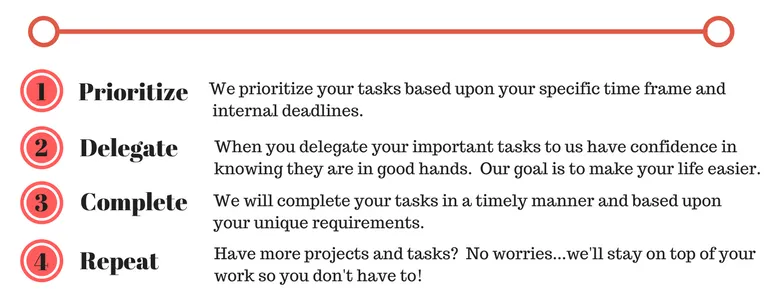Virtual Admin Solutions That Matters
.....an Extension of your Team and a Partner in your Productivity.
Welcome to Nonnah's Virtual Admin Services – Your Key to Enhanced Productivity!
At Nonnah’s Virtual Admin Services, our mission is to effectively assist entrepreneurs and small businesses by providing virtual assistance using high-capacity, cloud-based administrative solutions that increase productivity while also lowering costs.
Imagine regaining the freedom to focus on what truly matters to you – your business, your family, your passions, and your goals. With Nonnah's, it's not just possible............ it's a reality waiting to happen.
UNLOCK MORE TIME & ACHEIVE MORE GOALS
We adhere to a simple 4 step process when HELPING YOU ACHEIVE YOUR GOALS


Why Choose Us?
Are you overwhelmed by your never-ending to-do list, struggling to balance work and personal life, or feeling like you need an extra set of hands to manage your tasks? Look no further! At Nonnah's, we offer tailored virtual assistant services to help you take control of your time and productivity.
Personalized Solutions: Our virtual assistants understand that no two clients are the same. We work closely with you to create a customized plan that aligns with your unique needs and goals.
Expert Team: Our team is composed of skilled professionals with diverse expertise, ready to assist you with a wide range of tasks, from administrative support to creative projects.
Quality Assurance: We take pride in our commitment to excellence. Your tasks are handled with precision and care, ensuring top-quality results every time.
Data Security: Your information is safe with us. We implement stringent security measures to protect your data and maintain strict confidentiality.
What's Understood is Understood: We understand that as busy professionals, time is of the essence for you
Integration: This is why we will seamlessly integrate with your team and take care of your most pressing tasks.

Our Virtual Assistant Services Cater to a Broad Spectrum of needs.....
Frontend/Backend Virtual Administrative Assistance
Calendar/Email Management
Business Phone Line Coverage
Research/Compilations
Data Entry
Virtual Front Office Admin Support
Virtual Notary Admin Support
Customer Relations Management
Social Media Community Management
Travel Arrangements
Project Management
Light Bookkeeping Solutions
Business Brain Dump
Let us handle the tasks that are holding you back, so you can propel your business forward.
Start Delegating, Start Thriving
Imagine regaining the freedom to focus on what truly matters to you – your business, your family, your passions, and your goals. With Nonnah's, it's not just possible; it's a reality waiting to happen.
Let us handle the tasks that are holding you back, so you can propel your life and career forward.
Contact us today to explore how our virtual assistant services can empower you to achieve more and reclaim your time.
Contact us today to explore how our virtual assistant services can empower you to achieve more and reclaim your time.
⭐Testimonials⭐

Shannon is an incredible virtual assistant and a joy. Having her work with me these past 6 years is like having a strong right arm. She anticipates what is needed and works tirelessly to make sure the work is completed to your satisfaction. She is also encouraging and gives you the feeling that she is with you every step of the way. I love working with her and look forward to our continued partnership!"
Nikki Akparewa

“ My brand started with no structure, no social media traction and no administration at all and in 2020 Shannon came along and saved the day. Now I have a social media following ,my admin work is in place and the brand is now consistent and structured. Thanks Shannon for helping me grow my brand tremendously!!
Tina Brown, MSKE

"Shannon has been an invaluable addition to my daily workflow. With her exceptional organizational skills and prompt responses, she keeps me on track and ensures that nothing falls through the cracks. Her attention to detail and proactive approach have saved me countless hours, allowing me to focus on what truly matters. I highly recommend Shannon to anyone seeking a reliable and efficient virtual assistant."
Lyna Nyamwaya
